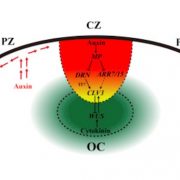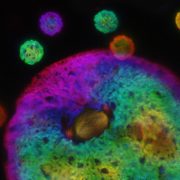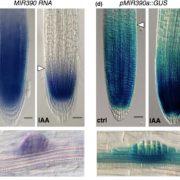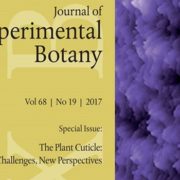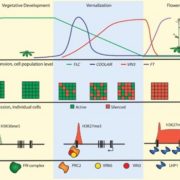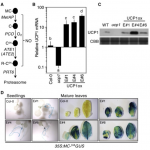GA-GRF module – A key regulator of rice leaf length via spatial cell division control (New Phytol)
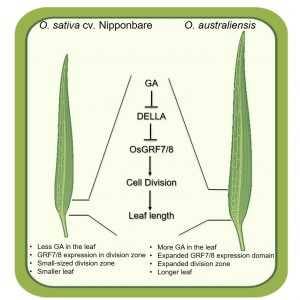 Leaf features have undergone significant changes during the course of evolution and domestication owing to ecological adaptations and changes in source-sink dynamics. Therefore, wild relatives of crop plants are important resources for exploring the genetic regulation of leaf features that might not be present in the cultivated gene pool. Jathar et al. have elucidated a key module explaining leaf length regulation in rice, utilizing the cultivated and wild rice accession showing contrasting differences in their leaf length. The study is important as the mechanism underlying the leaf size in monocots remains poorly understood in contrast to extensively studied leaf size regulation for simple Arabidopsis leaves and compound tomato leaves. The wild rice Oryza australiensis showed remarkably longer leaves and faster leaf elongation rate than cultivated rice Oryza sativa. Using the combination of transcriptomic profiling and leaf kinematics, the authors revealed that the levels of the hormone gibberellic acid (GA) have been strongly associated with the size of the division zone at leaf basal region, and thus leaf length. GA mediates cellular dynamics at the division zone via GRF transcription factors, OsGRF7 and OsGRF8. Given that the morphological variation in leaves is a crucial adaptation of plant response towards climate changes, the module could also be important for phenotypic plasticity under environmental fluctuations and could further be exploited to fine tune the leaf length to improve the physiological performance of the plants. (Summary by Prakshi Aneja @PrakshiAneja) New Phytol. 10.1111/nph.18029
Leaf features have undergone significant changes during the course of evolution and domestication owing to ecological adaptations and changes in source-sink dynamics. Therefore, wild relatives of crop plants are important resources for exploring the genetic regulation of leaf features that might not be present in the cultivated gene pool. Jathar et al. have elucidated a key module explaining leaf length regulation in rice, utilizing the cultivated and wild rice accession showing contrasting differences in their leaf length. The study is important as the mechanism underlying the leaf size in monocots remains poorly understood in contrast to extensively studied leaf size regulation for simple Arabidopsis leaves and compound tomato leaves. The wild rice Oryza australiensis showed remarkably longer leaves and faster leaf elongation rate than cultivated rice Oryza sativa. Using the combination of transcriptomic profiling and leaf kinematics, the authors revealed that the levels of the hormone gibberellic acid (GA) have been strongly associated with the size of the division zone at leaf basal region, and thus leaf length. GA mediates cellular dynamics at the division zone via GRF transcription factors, OsGRF7 and OsGRF8. Given that the morphological variation in leaves is a crucial adaptation of plant response towards climate changes, the module could also be important for phenotypic plasticity under environmental fluctuations and could further be exploited to fine tune the leaf length to improve the physiological performance of the plants. (Summary by Prakshi Aneja @PrakshiAneja) New Phytol. 10.1111/nph.18029


